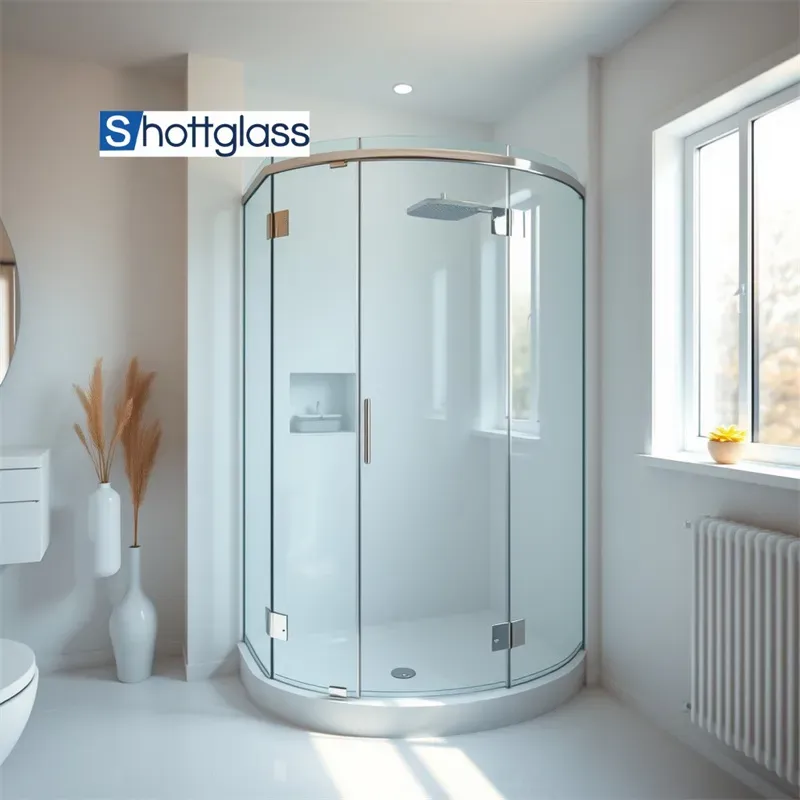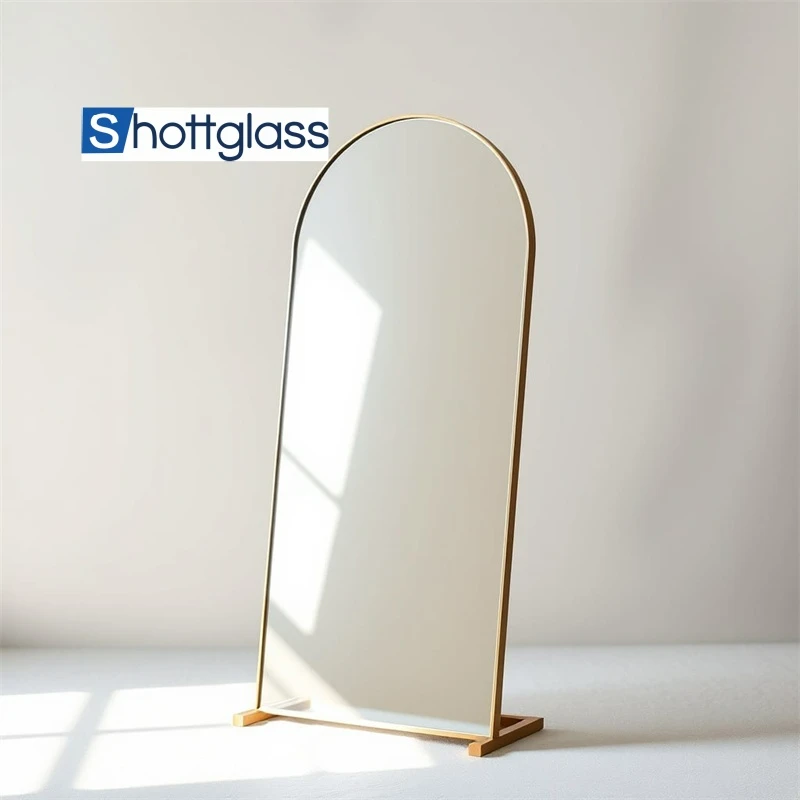Apr . 16, 2025 15:18 Back to list
What Is the Difference Between Regular Glass and Quality Tempered Glass?
Glass is a fundamental material in modern construction and design, serving both functional and aesthetic purposes across residential, commercial, and industrial applications. While regular annealed glass remains widely used for basic purposes such as windows and picture frames, quality tempered glass has become the preferred choice for safety-critical installations, including wet room shower enclosures, structural glazing, and high-traffic areas due to its superior strength and breakage characteristics. The key distinctions between these two types of glass lie in their manufacturing processes, mechanical properties, and safety performance, making each suitable for different scenarios. For instance, regular glass can be easily cut and customized on-site, whereas tempered glass must be shaped before heat treatment, after which it cannot be altered without shattering. Additionally, tempered glass is engineered to withstand greater impact and thermal stress, making it indispensable for applications such as glass for bathrooms, shower room glass wall partitions, and overhead installations like wired glass roof systems. Understanding these differences ensures the appropriate selection of glass type based on structural requirements, safety regulations, and environmental conditions.
Strength and Durability of Quality Tempered Glass
Regular glass, also known as annealed glass, is produced by slowly cooling molten glass to relieve internal stresses. This process makes it easy to cut and shape, but it also results in a relatively fragile material. When broken, regular glass shatters into large, sharp shards, posing a significant safety risk.
In contrast, quality tempered glass undergoes a specialized thermal or chemical treatment to increase its strength. The glass is heated to approximately 700 degrees Celsius and then rapidly cooled, creating surface compression and edge tension. This process makes tempered glass up to five times stronger than regular glass. It is ideal for high-impact applications, such as shower room glass wall installations, where durability is essential.
Additionally, tempered glass is more resistant to thermal stress, making it suitable for environments with temperature fluctuations. For example, tempered u profile glass and u-shaped glass used in facades benefit from this enhanced durability.
Safety Features of Quality Tempered Glass
One of the most critical differences between regular glass and quality tempered glass is its breakage pattern. Regular glass fractures into sharp, jagged pieces that can cause severe injuries. This makes it unsuitable for areas where safety is a priority, such as in wet room glass installations or public spaces.
Tempered glass, however, breaks into small, granular pieces with dull edges, significantly reducing the risk of injury. This safety feature is why tempered glass is mandated in many building codes for applications like doors, shower enclosures, and partitions. Wired safety glass, which applies a metal mesh interlayer between two sheets of tempered glass, provides even greater protection, often used in fire-rated doors or wired glass door systems.
Moreover, tempered glass is less likely to break under impact, but when it does, the small fragments are easier to clean up, minimizing hazards in high-traffic areas.
Applications of Regular Glass vs. Quality Tempered Glass
Regular glass is commonly used in applications where strength and safety are not primary concerns, such as picture frames, decorative items, or single-pane windows. It is also easier to modify, allowing for on-site cutting and drilling, which is not possible with tempered glass once it has been treated.
On the other hand, quality tempered glass is preferred in environments requiring high durability and safety. For instance, wet room shower enclosures and shower room glass wall panels rely on tempered glass to withstand daily use and prevent injuries. Structural applications, such as tempered glass roofs or U-shaped glass installations, also benefit from its strength and resilience.
In commercial and residential settings, tempered glass is often used for balustrades, tabletops, and vehicle windows. Its resistance to breakage makes it a reliable choice for public spaces, while its safety features ensure compliance with building regulations.
The primary differences between regular glass and quality tempered glass lie in its strength, safety, and applications. Tempered glass is significantly stronger, breaks into safer fragments, and is used in high-risk areas such as glass for bathrooms and structural installations like wired safety glass doors. Regular glass, while easier to work with, lacks the durability and safety features required for demanding environments. Choosing the right type of glass depends on the specific needs of the project, ensuring both functionality and safety.

-
Types of Reflective Glass
NewsNov.17,2025
-
What Is Dichroic Glass?
NewsNov.17,2025
-
Smart LED mirrors can have touch controls
NewsNov.17,2025
-
Laminated glass improves energy efficiency
NewsNov.17,2025
-
Insulated glass enhances building comfort
NewsNov.17,2025
-
Acid etched glass offers elegant privacy
NewsNov.17,2025
Related PRODUCTS














